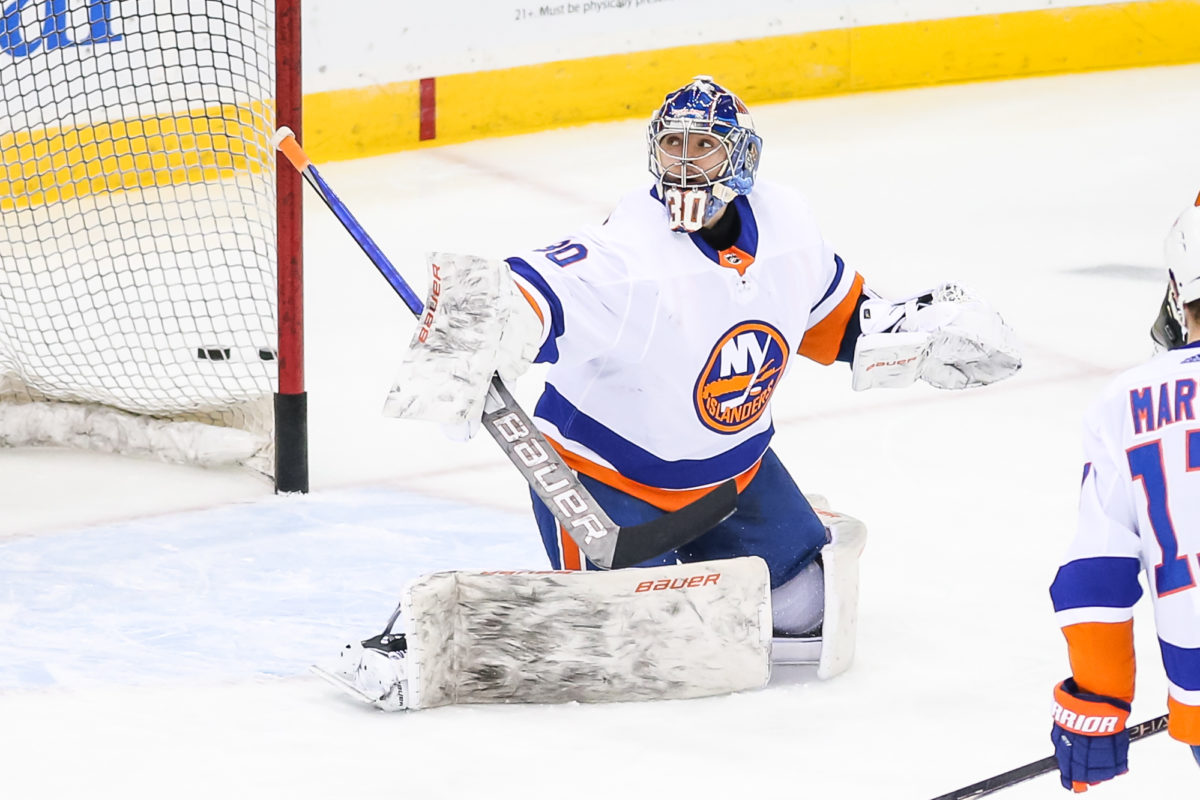The New York Islanders are going to play the Washington Capitals in their next three games to conclude the eight-game season series. Considering how the two teams are poised to finish with the two best records in the East Division, the next three games can be pivotal in determining which team is going to end up with the best record in the division and likely prove which team is more capable of making a Stanley Cup run.
The Islanders have won only two of the five games thus far, but the next three are going to be telling for how both teams have adjusted to each other on the ice and what they might look like if they are to meet again in the playoffs.
Islanders Line Combinations
It’s evident from the recent games that the Islanders are searching for scoring depth and offensive production on the backend of their forward lines. While the team scored six goals against the New York Rangers, a great sign for things to come, the offense only scored three goals in the three games prior. Moreover, the Islanders are only scoring 2.8 goals per game and have truly been struggling to replace the 12 goals that Anders Lee gave the top line in the first half of the season. The front office acquired both Kyle Palmieri and Travis Zajac to help with overall offensive production, and it will be pivotal against the Capitals to see which line combinations work.

In the recent game, the Islanders saw plenty of success from the line of Anthony Beauvillier, Jean-Gabriel Pageau, and Josh Bailey, with the line scoring four goals in the 6-1 victory against the Rangers. While the game can be perceived as an outlier, the way the shift was able to find the back of the net against a strong Rangers defense indicates that they can find success against the Capitals defense, which has played well this season but struggled in recent games, allowing 14 goals in the last three games.
In addition to keeping that line intact, the Islanders have to figure out if Zajac is the ideal skater on the top line with Mat Barzal and Jordan Eberle or whether an adjustment should be made. Throughout the next three games, finding out which lines are most effective will be crucial against a Capitals team that not only can run up the score offensively but limit an offense that fails to find goals on the backend.
The Pace and Style of Play
On April 1st and April 6th, the Islanders and Capitals played each other in two games that couldn’t be any more different. In the first game, both teams saw plenty of open ice and easy shots on the net, and as a result, both offenses were able to effectively move the puck through the offensive zone and pile on the goals in an 8-4 game. In the second game, the two teams tightened up defensively and played disciplined in the neutral zone, forcing the offenses to chip and chase and fight for every scoring opportunity in a 1-0 game. The Islanders won both games but what was remarkable was how they were able to adjust throughout both games based on the given situations.

Naturally, both teams are going to make adjustments during and between the next three games. For the Islanders, particularly the coaching staff, it’s going to be pivotal to recognize what the Capitals are giving them and what situations they can exploit. The team has proven over the course of the season that it can win in any type of game, but against the top team in the division, the Islanders will have to constantly adjust to the given situations. They will also have to be the enforcers and put the Capitals in uncomfortable situations, whether it means forcing them to play along the boards or forcing their defense to constantly block shots in front of the net.
Limit the Capitals Offense, Especially on the Power Play
The three games are ultimately going to come down to one matchup; the Capitals offense, which scores 3.50 goals per game for second in the NHL, against the Islanders defense, which allows only 2.28 goals per game for second in the NHL. Moreover, the Capitals have the best power play in the league, scoring 27.56 percent of opportunities. Ultimately, the Islanders are going to have to limit an offense that has been difficult to stop, particularly when they can move the puck around on the power play and find Alexander Ovechkin by the faceoff circle for easy shots on the net.
Ideally, staying out of the penalty box would be the answer, but considering how the defense will attempt to play rough in the offensive zone to prevent the Capitals from establishing any type of rhythm, penalties can be inevitable. The Islanders will hope that the excellent goaltending of both Semyon Varlamov and Ilya Sorokin continues with the duo posting a .923 save percentage and a 2.13 goals-against average, with Sorkin, in particular, continuing to improve and emerge as a Calder Trophy candidate.

The Islanders’ defensive pairings, meanwhile, have to force the Capitals’ offense into the chip and chase situations, which helped earn the team the recent 1-0 victory. Particularly, they have to play well at the blue lines to prevent the top skaters like Ovechkin and Nicklas Backstrom from establishing any puck movement or the ability to create open ice.
What the Islanders Might Additionally Prepare for the Upcoming Games
Something that can be an interesting development is if the Islanders choose to start defenseman Braydon Coburn in the next three games. Coburn played in one game thus far since he was acquired at the trade deadline, but as a bigger defenseman, he can give the team an edge in the defensive zone that the Capitals aren’t prepared for.
Additionally, this is the first time the Islanders will face the dynamic offense, with Anthony Mantha being a scoring threat in the later lines, with the forward scoring a goal in all four games since being traded to the Capitals. In the end, the quality of play should be great, and the implications of each game should be massive, with both teams hoping to earn the top seed in the East Division.